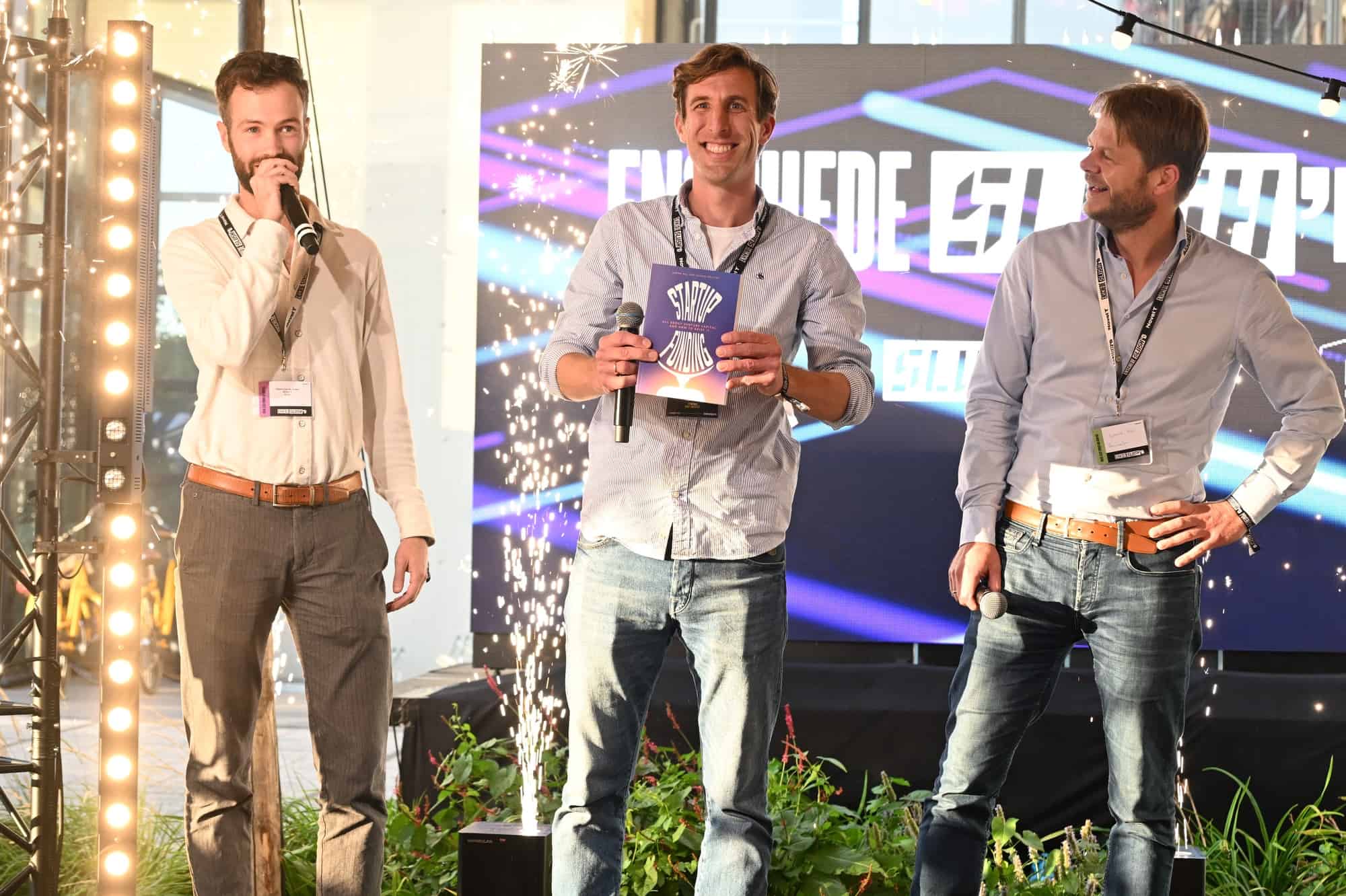
About Immer
- Founders: Niels ’t Hooft and Lennart de Meij
- Founded in: 2020, in Utrecht
- Employees: 9
- Money raised: 600,000 euros
- Ultimate goal: get as many people as possible reading with the help of the very best reading technology
You are probably familiar with this situation: you have been meaning to start that new book for weeks or even months, but time and again you just don’t get around to it. Before you know it, you’re back on the couch in front of the TV or glued to your phone. These days, we are more likely to reach for our smartphone than a good book. According to a report by publishing groups IPA and NPA, the average reading time has dropped by 24 percent over the past decade, while phones are being picked up 58 times a day on average.
A crying shame, according to Lennart de Meij and Niels ‘t Hooft. Together, they are developing an app with innovative software that should get us all reading again. E-books are a thing of the past with this almost meditative reading app. Through the use of color and sound, personal recommendations based on your reading habits, and pages of text that are divided into short reading blocks, reading a book should become attractive again. In this instalment of start-up of the day, Niels ‘t Hooft tells us more about their app.
What is Immer?
“Immer is more than a mere app. The app is actually the culmination of a book machine that we built. This machine makes use of an innovative technique that does not exist in the book world yet. The machine is able to automatically process all existing books, which lets us conveniently analyze the content. This way, we can present the books in a more attractive way on a smartphone. For instance, a romantic story can be shown in soft colors. But we also use it to generate summaries, and suggest the right book to the right person. The great thing about this is that we can track how people then read the books, so that we can continue to fine-tune our analyses further.”

How does the app work?
“All you have to do is load your digital books that you have already purchased. You can read a book in whatever style suits you, more traditional or maybe modern, for instance, with each sentence separate on the screen for extra reading comfort. We can see what users read, what time they read and how long they spend reading. This provides us with information about their reading preferences and helps us offer users a personalized reading experience.”
“We also add subtle, meditative sounds that improve concentration levels. This is all designed to enhance the immersive experience of a story or topic, but we also help you get more out of a text. To do this, you can switch between read mode and zoom out mode, which allows you to browse through a digital book much more easily, get summaries of what you’ve read, and where we make it much more fun to mark sentences or passages with an emoji. This helps you reflect on what you’re reading.”
So the app knows a lot about your reading tastes. How do you safeguard the privacy of the reader?
“We make a distinction between usage and users. So we know what you want when you read, but we don’t actually know who you are or where you live. We don’t need to know that either to be able to optimize your reading experience. Privacy laws don’t allow us to keep personal data for very long, so it only has advantages for us to decouple usage from people. We have more freedom to analyze the data this way.”
Why is it important that we read more digital books instead of paper books?
“Reading is simply incredibly cool, wonderful and worthwhile. It is a moment for yourself in which you can develop as a human being at your own pace. At the moment, we believe that smartphone apps are the best way to make reading books more popular. After all, people always have their phones with them and are looking for ways to use them more positively. Screens are getting bigger and better, with less blue light and sharper resolution. I think this development will only keep evolving in the future and a screen will eventually look more like paper.”
Which problem are you trying to solve?
“The way we read books at the moment is lagging behind in terms of development compared to new media and devices. New technologies are constantly tantalizing us, and books, on the other hand, call for prolonged concentration. As a result, reading books is not attractive enough for modern-day individuals. If we can fix that, we can get people into reading. Because the urge to read is often present – how often do you hear someone say that they want to read more?”
What challenges have you faced during the development of Immer?
“It’s a huge challenge to merge the different requirements of many different people into one app. At the same time, the solutions to meet those specific requirements are usually not so obvious. It often takes at least three versions before we have managed to develop a component that works properly. You have to make prototypes, test and then redesign things. It is an iterative process in which it is crucial that you also talk to real readers. Meanwhile, reading in portions works like a charm. Many people like the fact that you are not overwhelmed by a whole screen that’s full of text. But you wouldn’t want to know how many versions it took to pull that off.”
What developments are you currently working on?
“Our own app will feature a bookstore in the future. So, that will be an extra sales channel for book publishers. In addition, we are now exploring whether we can offer our technology to companies and institutions. We have noticed that there is a lot of interest in our innovation. Libraries could provide their members with a better reading experience this way, knowledge-intensive companies could transfer their content to their employees more effectively, and governments could make long texts more readable.”
“The education sector also regularly approaches us about collaborating. In the future, we would like Dutch teachers to share books with their classes via our app. Everyone will read on their own, but you will be able to see how far your classmates have got and what they think of something by adding comments. We think that will make reading more fun, allowing you to go deeper into things, reflect better, and learn more from them.”








